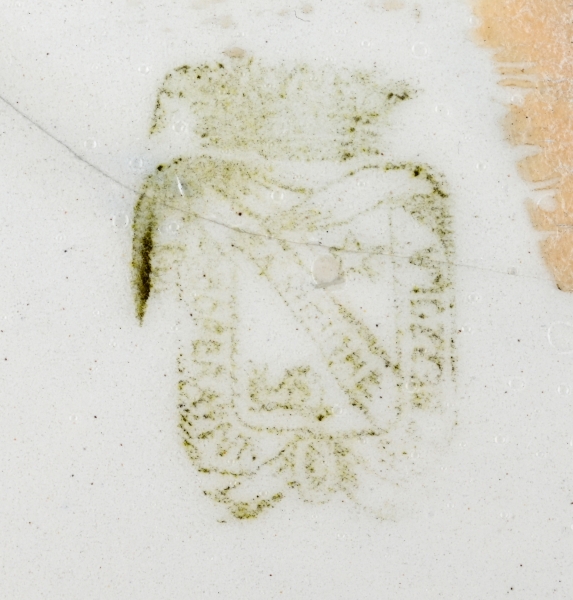
Andreas Heege and Ulrich Linnemann, 2021
Keramik der Cooperativa Bezzola Campione in CERAMICA CH
To this day, very little is known about the “Cooperativa Bezzola Campione” in the northern Italian municipality of Campione d’Italia (an Italian exclave in the Canton of Ticino) on the shores of Lake Lugano. We do not know when production first began, nor when it came to an end. An article on the “Esposizione industriale italiana del 1881 in Milano” [Industrial Exposition in Milan in 1881] published the same year included the following paragraph (Gilardi 2018):
“On the way to the Swiss border, on the shore of the lake opposite Lugano, we encounter two factories owned by the companies Verda Napoleone and Bezzola Beniamino that produce everyday crockery made of soft refined white earthenware. The Verda factory is more than forty years old, while the factory owned by Bezzola Beniamino only recently opened its doors. Both enterprises employ approximately eighty workers.”
In 1871, however, the “Zeitschrift für Schweizerische Statistik, Bd. 7” [Journal of Swiss Statistics, Vol. 7] had on page 71 published the following information about the Canton of Ticino (Rapport de la Direction du 4e arrondissement des péages fédéraux):
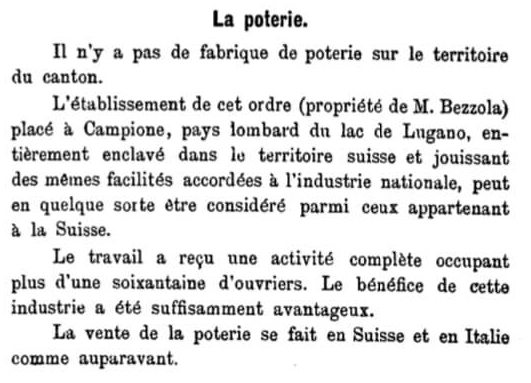
The report stated that no pottery factory existed in the Canton of Ticino but did mention the factory owned by a Mr Bezzola in Lombardy, Italy.
Another very similar report was published in 1869 (reproduced in the magazine Scuola Ticinese 157, Ottobre-Novembre 1989, 3-9, esp. 8)
Yet another newspaper report dating from 1863 has also recently come to light (Tag- und Anzeigeblatt für Kempten und das Allgäu : Amtsblatt für das Königliche Amtsgericht Kempten : Organ für land- und milchwirtschaftliche Interessen. Published on 30/10/1863):
“Bern, 19. Oct. On Friday night last, a natural event occurred in Campione near Lugano, which was reminiscent of last year’s Marcotte [Morcote] catastrophe. On Friday night, the large pottery factory of Campione, which was located right on the shore of Lake Lugano, was almost completely inundated by the waves. Because the shore in that area is very stable and the foundations of the factory were also built on very solid ground, it is hard to explain how the disaster happened in the absence of a preceding earthquake. Immediately after the catastrophe nothing was observed at the site where the buildings had stood, except for a kind of sizzling up of the lake, and then all became quiet. The factory was owned by a Mr Bezzola, who is a member of the Italian Chamber of Deputies.”
As early as 19th October 1863, the Bund newspaper in Bern published an eye-witness account of the events that had occurred on 16th/17th October, which explicitly mentioned that the printing presses used for transfer-printing on pottery had sunk into the lake:
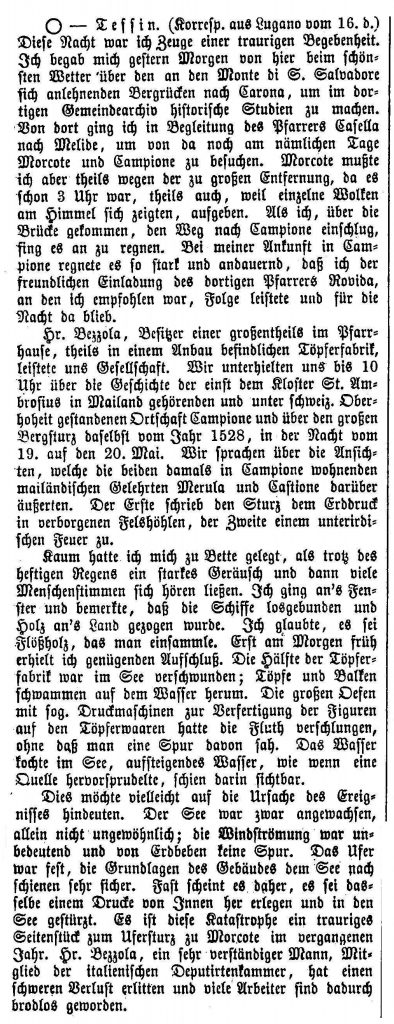
The catastrophe was widely reported in the Swiss media: Thuner Wochenblatt 21st October 1863, Zürcherische Freitagszeitung 23rd October 1863, Zuger Volksblatt 24th October 1863, Fögl d’Engiadina 31st October 1863.
So far, two ceramic objects from the Bezzola firm have been found in the museum collections of the Canton of Graubünden, which show that the wares were exported to Switzerland. The Local museum Rheinwald in Splügen houses a bowl with a mark (HMRW_01):
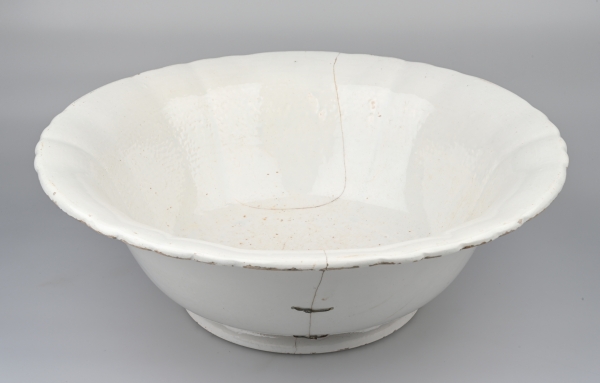
The mark (see the title image) is very similar in design to the one used from around 1856 by the prominent French company Utzschneider & Cie. in Sarreguemines (Gauvin 2005, 122-123). The snail in the Bezzola factory mark can also be seen in the coat of arms of the municipality of Campione.
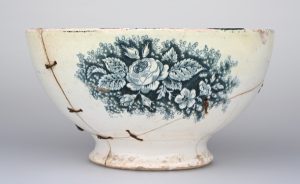
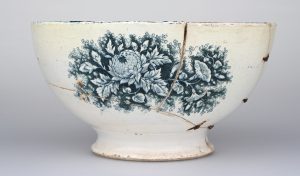


The Rhaetian Museum in Chur (RMC H1979.50) has in its collection a coffee cup with the impressed mark “F. Bezzola” (Fabbrica Bezzola?). The piece is part of the Margrith Schreiber-von Albertini collection and is thought to have originated from Casaccia/Cumvent, Haus Klösterchen in the Engadin region.
Acknowledgement
We would like to thank Marcella Giorgio for making us aware of Gilardi 2018 and Franca Liggenstorfer, Walchwil, for translating the passage quoted from the book.
Translation Sandy Haemmerle
References:
Gauvin 2005
Henri Gauvin, Sarreguemines. Les marques de fabriques, Sarreguemines 2005.
Gilardi 2018
Sabato Gilardi, Christian, La manifattura ceramica “Ghirla”, in: Enrico Brugnoni/Christian Gilardi Sabato, La ceramica di Girla. Artigianato e preziosità delle terre dell’Abbazia di san Gemolo in Valganna, San Gemolo in Valganna 2018.

